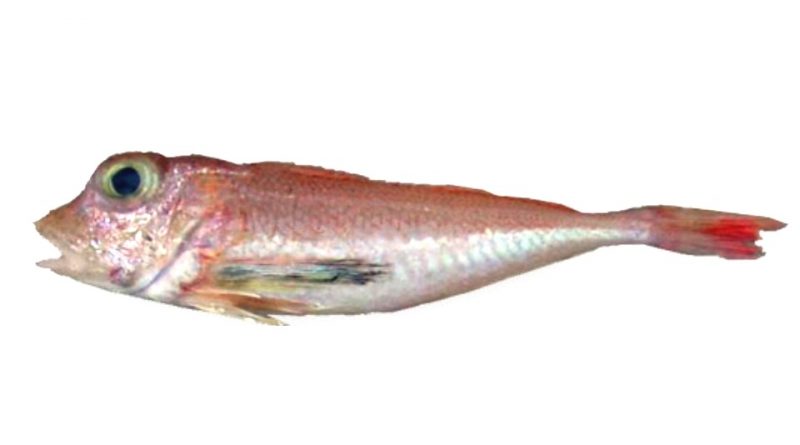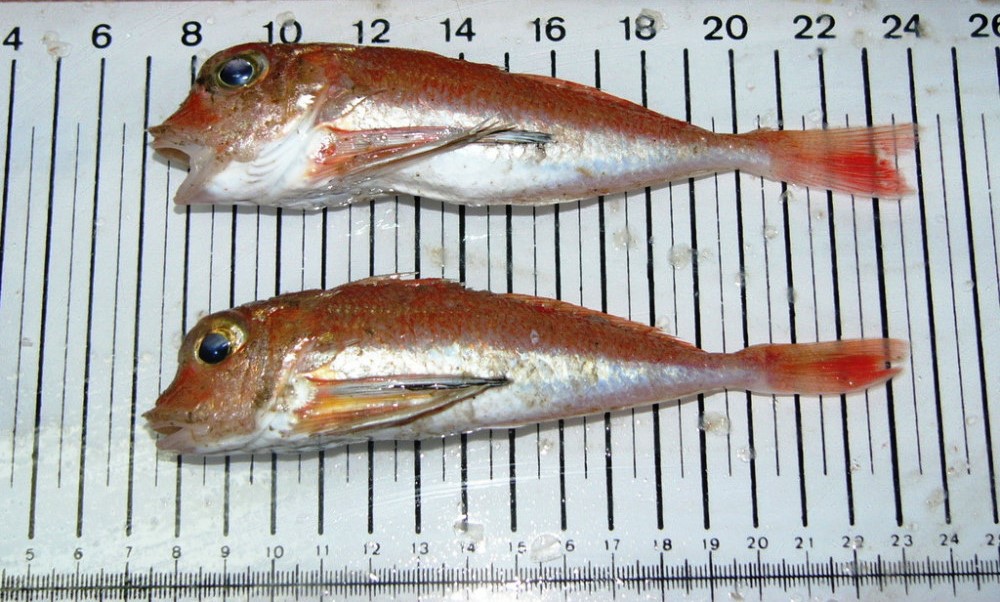Lepidotrigla dieuzeidei
Lepidotrigla dieuzeidei
The spiny gurnard or smooth gurnard or spiny gurnard (Lepidotrigla dieuzeidei) is a small fish belonging to the Triglidae family.
Systematic –
From a systematic point of view it belongs to:
Eukaryota domain,
Kingdom Animalia,
Subkingdom Eumetazoa,
Phylum Chordata,
Subphylum Vertebrata,
Superclass Gnathostomata,
Class Actinopterygii,
Infraclass Teleostei,
Order Scorpaeniformes,
Suborder Scorpaenoidea,
Triglidae family,
Genus Lepidotrigla,
Species L. dieuzeidei.
The term is synonymous:
– Lepidotrigla dieuzedei Blanc & Hureau, 1973.
Geographic Distribution and Habitat –
Lepidotrigla dieuzeidei is a marine fish whose biology is known little, having long been mistaken for Lepidotrigla cavillone, which should be endemic to the Mediterranean Sea.
Its marine habitat is that of sandy or muddy bottoms at depths of 60-200 m, but it can also be found around 600 m and therefore at greater depths than its peers.
Description –
Lepidotrigla dieuzeidei is characterized by having a robust body at the front, which becomes increasingly slender towards the tail and which reaches a maximum length of 20 cm, more commonly around 11 cm.
With the exception of the pectoral area, it is covered by large scales, cteneods and deciduous ones. Also present are bones, ridges and spines.
The head is large and the eyes are larger than those of L. cavillone. Behind the eyes there is a shallow furrow, without thorns. The latter are also missing in front of the eyes, but are present on the preorbital bones.
The opercular spine is short and slightly exceeds the opercular membrane. A long nuchal spine extends beyond the origin of the first dorsal fin. The rostral process has several spines of almost equal length and without prominences.
It has a wide mouth, cut horizontally and equipped with villiform teeth on the jaws and on the vomer.
It has two dorsal fins, inserted in a groove equipped on each side with sharp spines; at their bases there are round shields. The first fin is composed of 8-9 spiny rays, the first three of which are serrated and the others quite spaced apart. The second dorsal is contiguous to the first and is made up of 14-16 soft rays, almost all of which are bifid at the terminal part.
The anal fin composed of (14-16) rays, also bifid, is opposite and similar to the second dorsal, but lower.
The caudal fin is large and has the free edge slightly in the center and with pointed lobes. The pectoral fins are large and have 9 rays of which 3 are free, elongated and articulated; they reach the anal opening even with 1 free ray. The ventral rays (1 spiny and 5 soft rays) are a little shorter than the pectorals and insert slightly after the pectorals.
Biology –
Lepidotrigla dieuzeidei is a little-known species, long confused with Lepidotrigla cavillone, from which it was only specifically distinguished in 1973. For this reason, there are still few details on its biology and its reproductive cycle is not known.
Ecological Role –
Lepidotrigla dieuzeidei is a fish that feeds on crustaceans, especially amphipods.
It is caught with trawl nets and large beach seines. Take the bait and lines.
The species is reported in Sicily, but is probably more widespread having in the past, as mentioned, been confused with L. cavillone.
Guido Bissanti
Sources
– Wikipedia, the free encyclopedia.
– GBIF, the Global Biodiversity Information Facility.
– Louisy P., 2016. Guide to the identification of marine fishes of Europe and the Mediterranean. Il Castello Editore, Milan.
– Nikiforos G., 2008. Fauna of the Mediterranean. Giunti Editore, Florence.
Photo source:
– https://www.colapisci.it/PescItalia/pisces/Perciformi/Triglidae/capponespinoso.htm
– https://observation.org/photos/24850464.jpg


